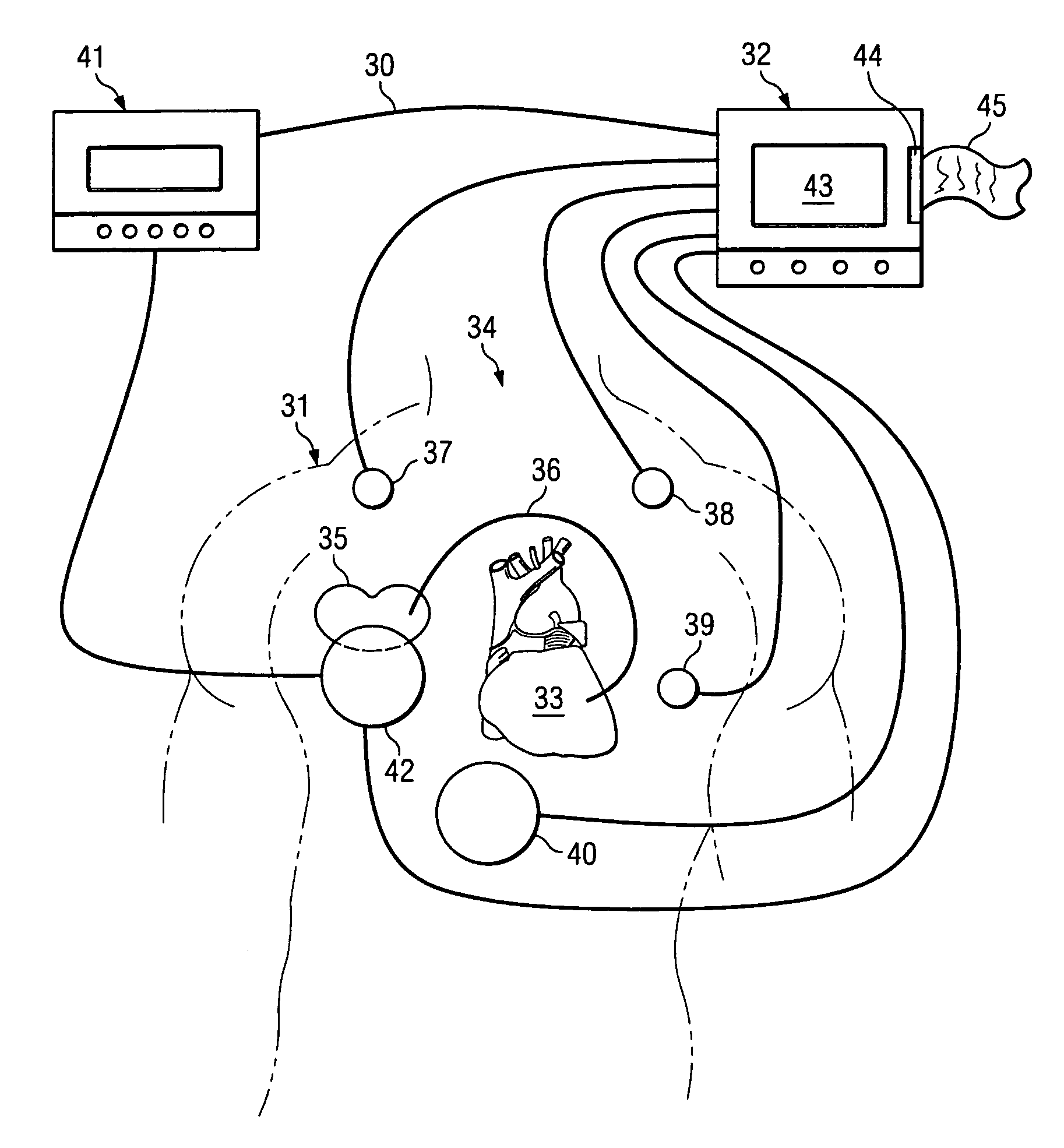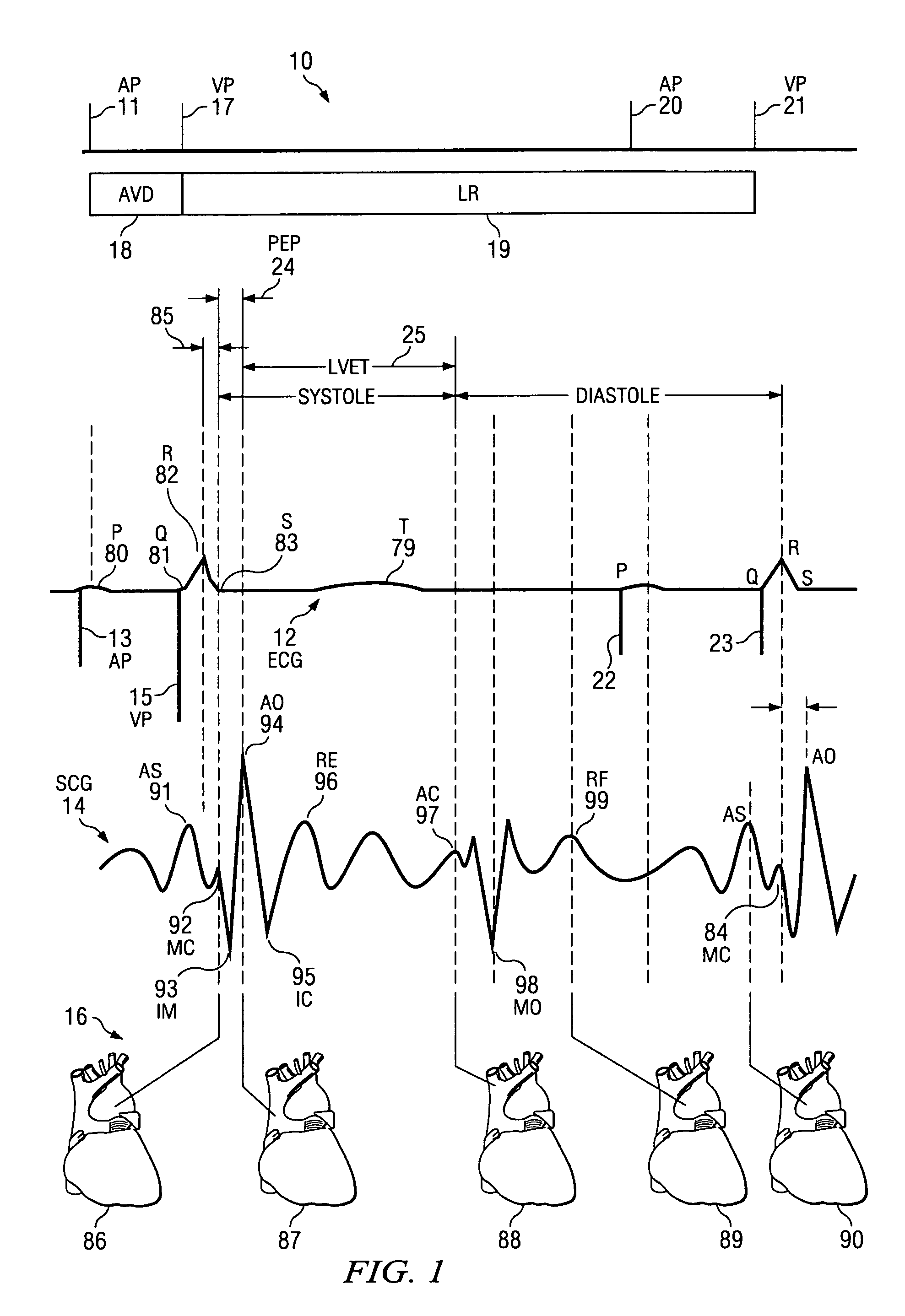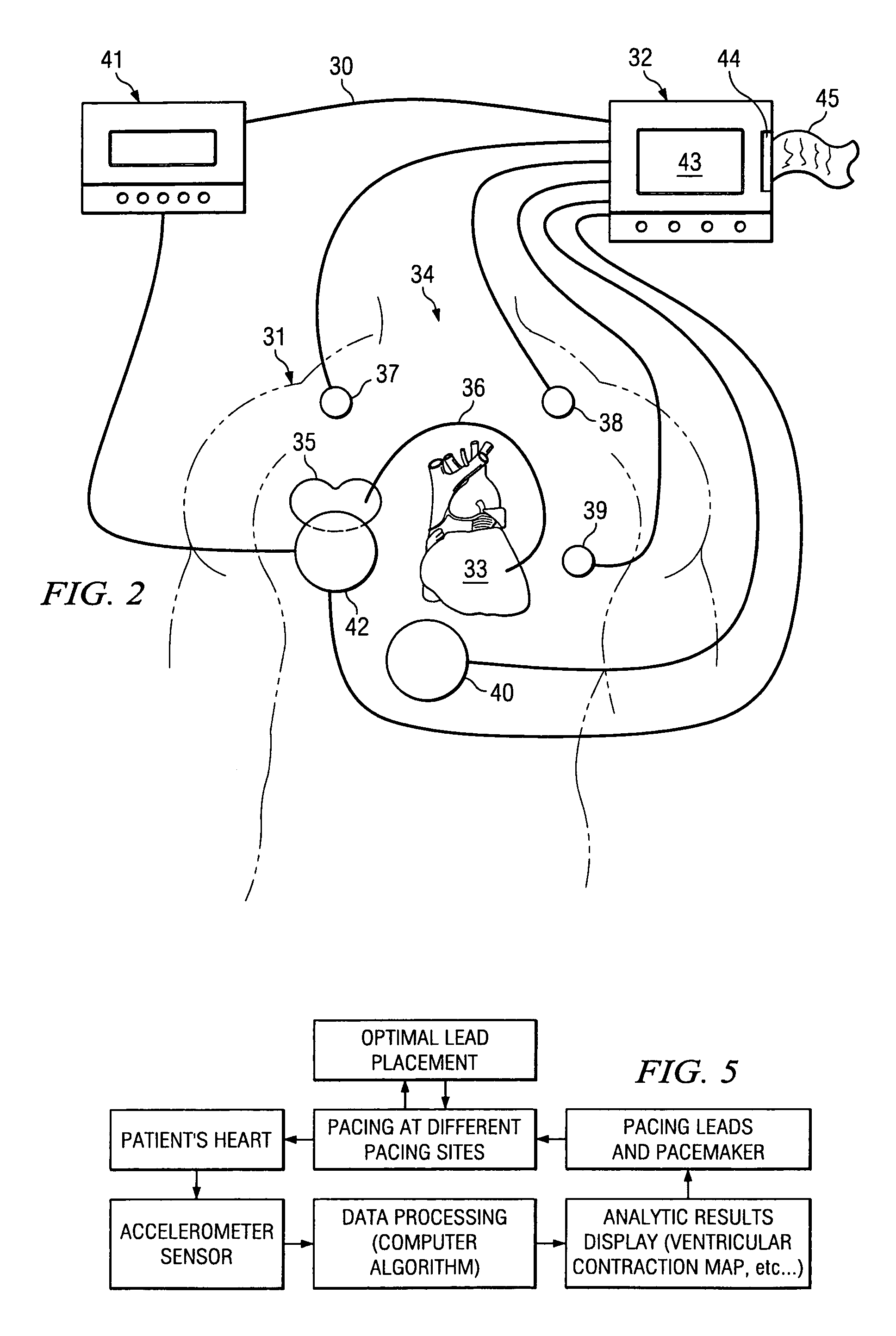Optimization method for cardiac resynchronization therapy
a technology of resynchronization therapy and optimizing method, which is applied in the field of implantation of cardiac pacing devices, can solve the problems of increasing the risk of progressive heart failure or sudden death of patients with left ventricular failure, affecting the synchronous beating of the ventricles of congestive cardiac failure, and many patients remain markedly symptomatic, so as to shorten the pre-ejection period and improve the rate of contraction of the left ventricle. , the effect of effective treatmen
- Summary
- Abstract
- Description
- Claims
- Application Information
AI Technical Summary
Benefits of technology
Problems solved by technology
Method used
Image
Examples
Embodiment Construction
[0030]The invention relates in general to a method for providing a reliable prediction for whether a patient would be a good candidate for cardiac resynchronization therapy and for determining the optimal placement of leads and settings of a cardiac pacing device in real time while the pacing device is implanted into the patient. In one embodiment, the method of the invention preferably includes detecting hemodynamic parameters corresponding to the motion of a patient's heart with an accelerometer, converting the detected parameters into digital data that is fed into an analysis module for calculation and display of ventricular contraction mapping, and comparing the results generated by different pacemaker lead placement to provide an optimal lead location. In another embodiment, hemodynamic parameters are detected and compared to those generated by an unpaced heart, thereby predicting whether CRT is an appropriate option for a given patient.
[0031]The invention further relates to a ...
PUM
 Login to View More
Login to View More Abstract
Description
Claims
Application Information
 Login to View More
Login to View More - R&D
- Intellectual Property
- Life Sciences
- Materials
- Tech Scout
- Unparalleled Data Quality
- Higher Quality Content
- 60% Fewer Hallucinations
Browse by: Latest US Patents, China's latest patents, Technical Efficacy Thesaurus, Application Domain, Technology Topic, Popular Technical Reports.
© 2025 PatSnap. All rights reserved.Legal|Privacy policy|Modern Slavery Act Transparency Statement|Sitemap|About US| Contact US: help@patsnap.com



